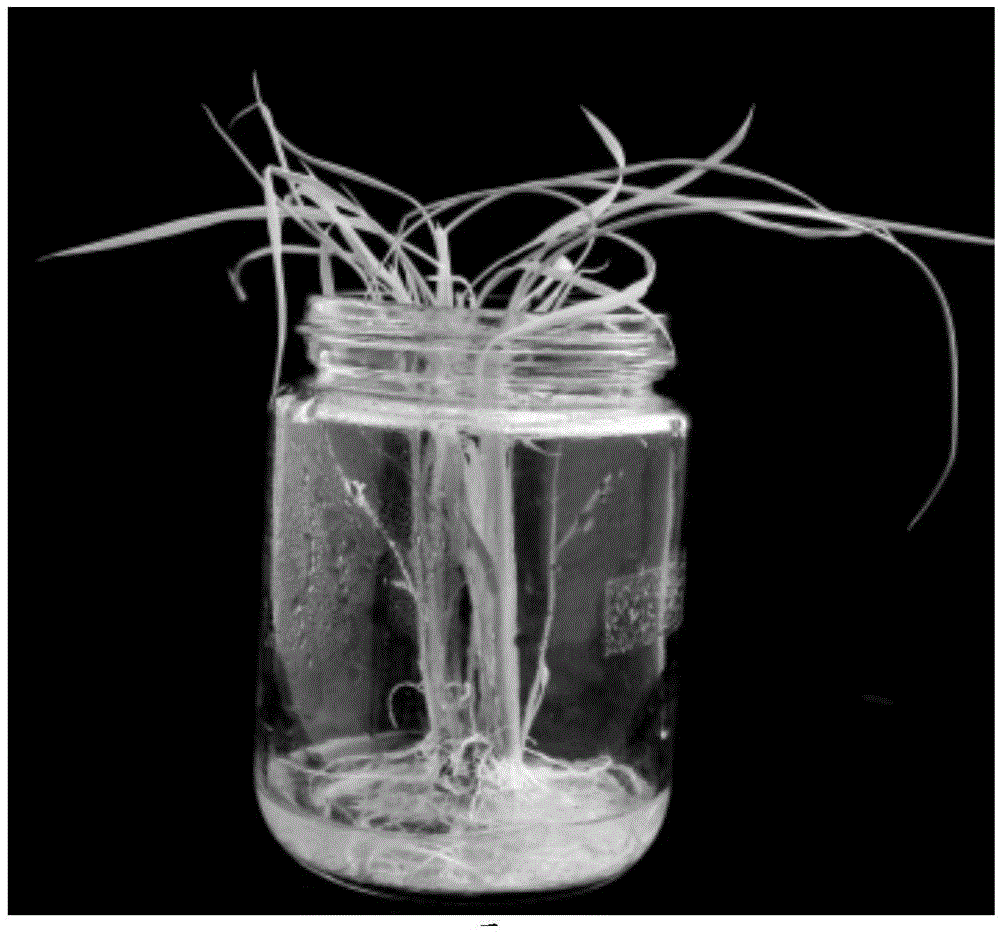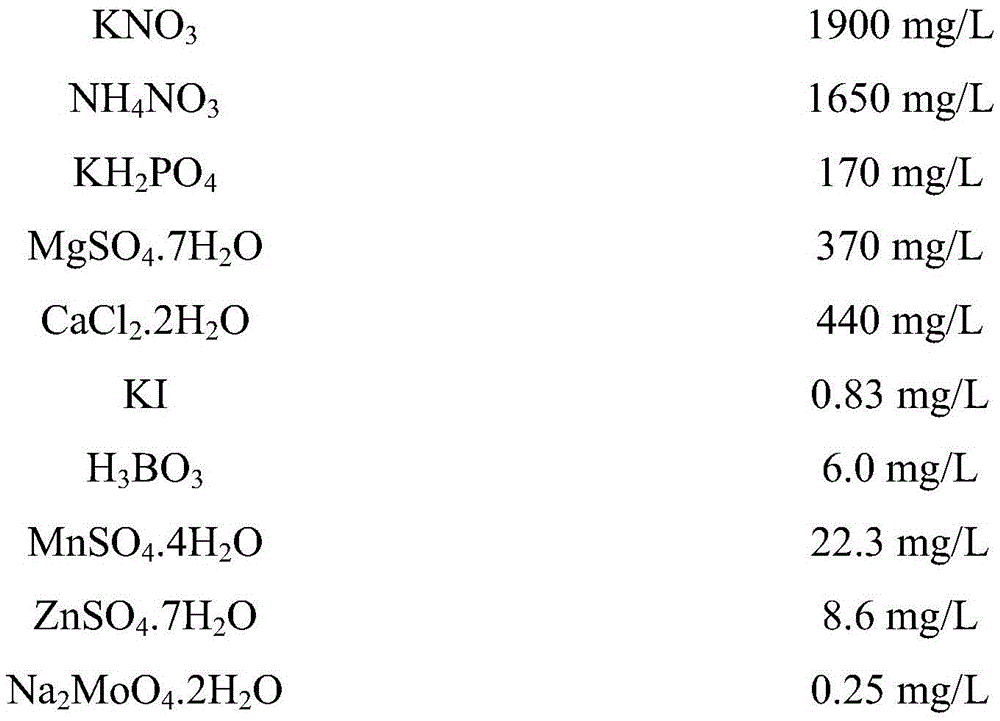Culture medium and method for inducing embryogenic callus of Southeast-Asia wild rice selfing line to differentiate and grow seedling
An embryogenic callus and culture medium technology, applied in the field of culture medium, can solve the problems of low efficiency and difficulty in obtaining embryogenic callus and large differences in genome of medicinal wild rice
- Summary
- Abstract
- Description
- Claims
- Application Information
AI Technical Summary
Problems solved by technology
Method used
Image
Examples
Embodiment 1
[0020] 1. The medium of the present invention is as shown in Table 1.
[0021] Table 1 The medium composition of the present invention
[0022]
[0023]
[0024] The pH of the medium was 5.8.
[0025] 2. Materials
[0026] Seeds of the common wild rice inbred line in Southeast Asia.
[0027] 3. Reagents
[0028] The chemical reagents used in IAA, NAA, 2,4-D, KT and various tissue cultures are domestic analytical grade.
[0029] 4. Methods and Results
[0030] Select the healthy embryogenic callus with light yellow color and tight texture produced by the seeds of the inbred line of wild rice in Southeast Asia, and transfer it to the medium described in this example. After 3 days of dark cultivation at 28°C, it is transferred to light cultivation, and the light intensity is 30000lx , the light time is 16h / d. The results found that on the medium, part of the callus browned and died, and the internal unbrown callus continued to proliferate. The new callus was white, an...
PUM
 Login to View More
Login to View More Abstract
Description
Claims
Application Information
 Login to View More
Login to View More - R&D
- Intellectual Property
- Life Sciences
- Materials
- Tech Scout
- Unparalleled Data Quality
- Higher Quality Content
- 60% Fewer Hallucinations
Browse by: Latest US Patents, China's latest patents, Technical Efficacy Thesaurus, Application Domain, Technology Topic, Popular Technical Reports.
© 2025 PatSnap. All rights reserved.Legal|Privacy policy|Modern Slavery Act Transparency Statement|Sitemap|About US| Contact US: help@patsnap.com



